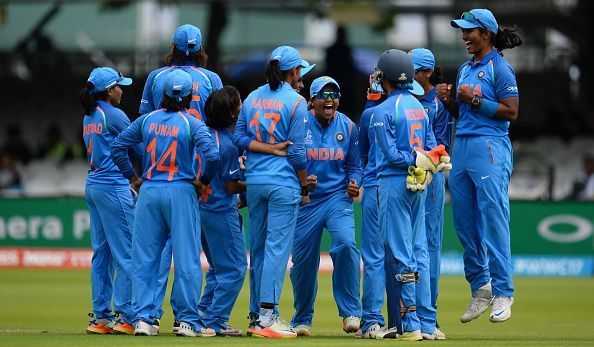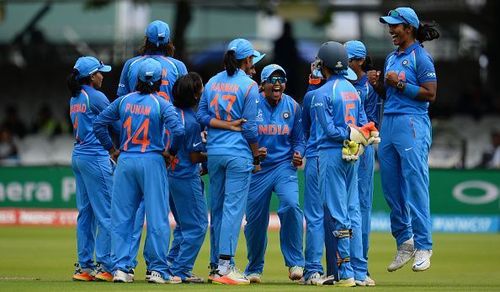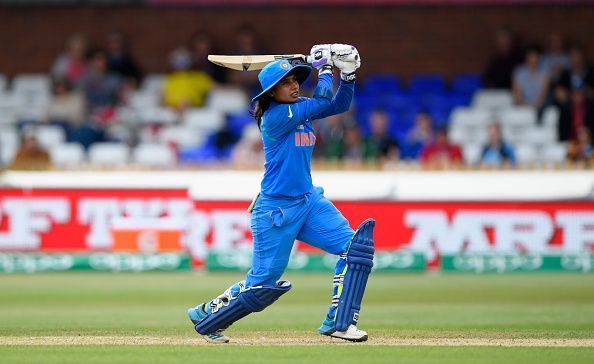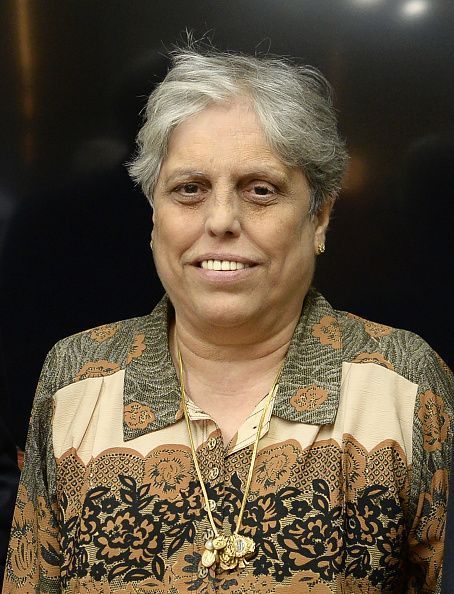
The women's world before and after Mithali

Mithali Raj reads Rumi. Mithali Raj walks in to bat with a floppy hat. Mithali Raj is the top run-scorer in women's ODI cricket. Indian women do play cricket, and they have world-record holders for God's sake. Indian women are no longer curtains; they can no longer be adjusted according to the wind or the Sun. They won't hide what needs to be hidden and reveal only what they're asked to.
Quite miraculously, kids are hell bent on getting 'Mandhana' inscribed for No. 18 and not the number's more popular owner. These kids can be forgiven for such a demeanour because they haven't witnessed a world before 2017. It is pleasing, in a way, that they have familiarized themselves with this team first and not that one.
Indian women most often make the news. They're newsworthy. But now, perhaps, they're more than just newsworthy. Or are they? More importantly, will they be?
The country's adrift with such opinions, presumptions, and characterizations, and the Women's World Cup 2017 reached the zenith that the Olympics had last year, in that everyone's talking about it while they're doped with the sense of nationalism that somehow finds a safe recluse in sports.
Whatever they've doped themselves with may soon wither off; in fact, it may wither off in a couple of weeks, and four years later, you may find a new kid with a new jersey number, rooting behind a new name.
In the era of social-media rendezvous, where the shelf-life of an event is quintessentially shorter than the event itself, these women need more than just the Facebook chest-thumping, which is also, in part, because they're women. Women in India have often been both, the change-makers as well as sufferers of the change.
For Shanta Rangaswamy -- the first Indian woman cricketer to receive the BCCI's lifetime achievement award -- it was never about this short-lived fame. It wasn't about fame or money at all, for there was no fame and no money. Nationalism, if there ever was any, existed when Indian women were still amateurs.
"A lot of our prime time was lost in waiting, we didn't get enough chances. In our time, we used to get to play once in two years, once in four years, sometimes. After 86 (1986) we played in 91, after 77 (1977) we played in 82... 84 in fact," Shanta tells me over call.
What Shanta says has got a lot to do with the power tussle in the BCCI's hierarchy and the way different presidents approached the women's game.
It was not until 2006, under Sharad Powar's regime, that the BCCI took over the reigns of women's cricket and gave the ladies recognition. Until then, women's cricket in India was administered by the Women's Cricket Association of India (WCAI), which was formed in 1973.
"The IWCC (International Women's Cricket Council) and the ICC merged in 2000. But Dalmiya (the late Jagmohan Dalmiya, the then BCCI president) wasn't keen on carrying women's cricket. He sent a letter to the ICC saying we authorize WCAI to run the women's game.
It was only after Powar came, in 2006, that they funded India's tour to England. It was again Powar who brought it back -- the pension, the merger everything was Sharad Powar. In 2006, they took a decision to run women's cricket in India, which they weren't doing before that," Shanta explains.
In that regard, Shanta feels, this generation has been lucky.
"But this generation, even before the BCCI took over, had a good exposure. Anuradha Dutta and Shubhangi Kulkarni with the Women's Cricket Association of India organized a lot of matches," the 63-year-old adds.
Former India captain, Mamatha Maben, a part of the generation that followed Shanta's and who also captained Raj in her youth calls Shanta, and Diana Edulji -- who's also a member of the Supreme Court-appointed Committee of Administrators (CoA) -- the mothers of women's cricket in India.
"For us, if Shanta and Diana had not laid the foundation, there was nothing. They did it against all odds, I have seen it with my own eyes. It used to bring tears to my eyes when we used to travel in the unreserved compartment in a train coming from the North," says Maben, the player turned professional coach.
"The train would come from somewhere, and we would have to get into that unreserved coach with 40 pieces of baggage, with just 5 minutes of stoppage. There was no such thing as a reserved compartment.
"We used to put Shanta in the front, I used to be very scared and used to push Shanta in the front. She used to go and shoo everybody off and get us a seat," Maben remembers.
From getting a seat to getting the women on the ground, Shanta has done it all. She was the first Indian woman to score an international century (against New Zealand in 1976) and quite fittingly, assumed the responsibility on herself to run women's cricket.
"Shanta, she not only used to slog on the field, she used to slog off the field as well. I mean we only had one de-facto secretary. Whenever there was a match she used to run for bookings and all. Whenever there was a World Cup or a local tournament, she used to get all the sponsors, conduct tournaments," Maben expresses her gratitude.
"We never used to have balls, you know that? We never had new balls to play for the state camp, she used to go to the sports council and get the balls, and get the nets. I have seen all those days. Shanta and Diana, they have done a lot for women's cricket, for it to survive. Else, like so many sports that started along with women's cricket, it would have died
"Today, on that foundation Mithali and Jhulan have built, and now it is up to Harmans and Smiritis to take it forward," she adds.

The stories about women having it hard aren't uncommon, not the least in India. It was not until 2015 that a central contract was awarded to the women's team for the first time, nine years after the team gained recognition from the BCCI.
And that has got a lot to do with Shanta's concerted efforts to give the women their designated share. A change at the helm of affairs at the BCCI also helped her cause.
"That (central contracts) was during my time as the chairman of the selection committee, and thanks to Anurag Thakur for that. I had to do a lot, and even though I had a little role play, but it was because of Anurag Thakur that it happened," Shanta says, her voice reeking of contentment and gratitude at the same time.
In a career that spanned from 1976-91, she played only 16 Tests and 12 ODIs. Mithali, in a career that has spanned for 18 years, has played only 10 Tests. As much as it speaks of how hard it was for women to get out on the field, it also speaks of their undying perseverance, something that continues till date.
And that perseverance did pay off, to whatever extent it has when the BCCI softened its stance post-2006. Shanta was quick to give the credits where it was due.
"Sharad Powar started pensions for retired women cricketers. We're all recipients of that. I have never met Srinivasan (N Srinivasan, former BCCI President), have never seen him, but across the board, he increased the pension by 150%. The message you're sending to the current cricketers is 'don't worry, BCCI will take care of you even after retirement.'
"We need progressive minded people at the top," Shanta says.
Maben echoes these sentiments. She also implores to take the funds and the recognition to the grassroots as it isn't just the cream that needs attention.
You don't have to look any further than Shanta herself to realize that. The administrator, during the days of the WCAI, had to work full-time at Canara Bank and arrange for sponsors, kits, accessories and even nets at the same time.
"Earlier we couldn't do it because we didn't have the funds. Now we could earmark, maybe 1% or 2% a year would be sufficient. They can reap their rewards 5-10 years down the line," says Maben.
"I'm glad, though, to see that the BCCI is warming up to women's cricket. The first five years, (2006-11) it was a bit cold, and it felt as if it was thrust upon them. But now, they feel like they are one of them. At the end of the day, they feel like they're playing under the BCCI.
"From an Indian perspective, a lot of money is being spent only on at cream, at the top. The domestic players -- and this has been my grievance for a long time -- throughout the year make 25 or 30 (thousand rupees). I mean for a year of sacrifice, 25 or 30 is nothing to show," she laments.
The contrast was seen when the BCCI announced an award of Rs. 50 Lakh for each member of the women's team, an amount that was more than three times of what a Grade A cricketer would get from her contract (Rs. 15 Lakh) for a year. Also, to put things in perspective, a Grade A male cricketer receives Rs. 2 crores per annum.
"We're unable to retain talent. How many of those who play at the domestic level will go to the top? Hardly 10% would go to the top. They have to introduce this contract system even in the domestic circuit. Let it be 5, 3, 2... something.
"Nowadays, you can easily make 5, 6 lakhs per annum if you're well educated. At least 3-4 you can easily make. And most of them (cricketers) are educated these days, so to hold them back, 30-40K isn't enough.
"Everything is professional these days. You just can't come and practice for two hours. You have to practice in the morning, you have to practice in the evening. The pay needs to be increased at the domestic level," the disappointment was apparent in Maben's words.
Devika Vaidya, a 19-year-old who has played ODI and T20 cricket for India, is pursuing her BBA course on the sidelines. In an interview with Sportskeeda in June, she'd spoken about the need for an alternate career option.
"I am pursuing BBA because I want a backup profession. I will not be playing cricket all my life, and with injuries being a common obstacle in our journey, a second option is always needed," Devika had said.
It is here that Maben feels that the BCCI have a lot at their hands.
"I have seen so many students from my playing days... they had all done MBAs and they were so good to make a career for their country. Now they are all in America and England and things like that. But they were really good cricketers, we just couldn't retain them. First thing for BCCI is the domestic contracts, and then introduce cricket at the grassroots."

Maben, who is also a coach at a private cricket academy, has been urging that the states need to pay attention to women's cricket at the domestic level.
"Quite a few people have seen that we've got the skill. Some states are backing women's cricket now. Some states don't. There are hardly any camps, there are hardly any league matches.
"No matter what, end of the day, the cream won't be with us all the time. Women's careers are short. Hence, first get the domestic cricket going and then hit the grassroots. Why not get an all-India level school tournament?
"And I'm sure schools will send their children. If there is money, schools will. They can organize it with the soft ball. If not the leather ball, soft ball cricket would do. England and Australis do it a lot, and so you can see the results now. And they started it ten years back," Maben speaks with optimism.
The effects of a subpar domestic structure are already being felt. To quote an example and to reiterate what Raj had said after India's loss in the World Cup final, the team didn't have the experience of playing in pressure situations, which eventually led them to their peril.
As much as the team needs to be hailed for the campaign, it cannot be denied that the ability to win knockout games is something that needs to be installed and that it would come only by playing more and more games under pressure.
While there was significant progress made this World Cup, with the team winning against New Zealand and Australia in back-to-back matches, both of them being knockout games, the ability to succeed at the final hurdle wasn't there.
9 out of the 15 players in the squad play for the same domestic side -- the Railways. Hence, it could be validly argued, as it was already on this platform, that most of these women would not have played high-pressure games at the domestic level.
Also, that more than one-half of the team comes from one domestic side speaks of the kind of competition that exists for the spots, something that Shanta points out.
"If you look at the base, the base for women's cricket isn't wide enough in India. There isn't much competition to get into the team, to stay in the team, and for others to upstage the established ones.
"A lot of competition is needed, which I don't see in the current Indian team. There is very little to choose from. They haven't widened the base and that's not an overnight process. They should start it now and see the results in a few years' time," she says.
Whatever the base is, whatever the resources are, they are better than days of Shanta and Maben. While the results, in the form of this World Cup campaign, are there to see, the work is far from being done.
The odds are now stacked in favour of the women's team more than they ever were before. The board is awarding the players, the governments are offering them jobs, and while it might as well be a knee-jerk reaction to the team's recent performance mixed with vested interests, cricket needs to ensure that it extracts the maximum out of the surge in popularity, so that the days Maben had seen do not come back to haunt the current crop.
"Against all odds, we used to go roll the mats, water the pitch, put up the nets, finish our practice... we never used to have groundsmen, Shanta used to conduct club practice, and we used to do everything.
Even at the state camp, the balls used to be provided by Shanta through her contacts. She knew a few ministers, so... she is the mother of Indian women's cricket in the South, and Diana is for the North," Maben recalls.
TV channels are conducting interviews, the electronic media is abuzz and the board has been made to take notice. A women's IPL is being talked about, although that seems to be a distant reality, that it has been talked about it enough.
What remains to be seen is what happens when the dust of nationalism settles.
"I am a coach at an academy and there are several boys and girls of around 9 years of age. I could see that the win against England galvanized them. One kid told me, madam, I am going to play with Mandhana one day," Maben bursts with pride.
What Maben could have probably told the kid, given all her experiences of the past, was to 'be careful what you wish for.'